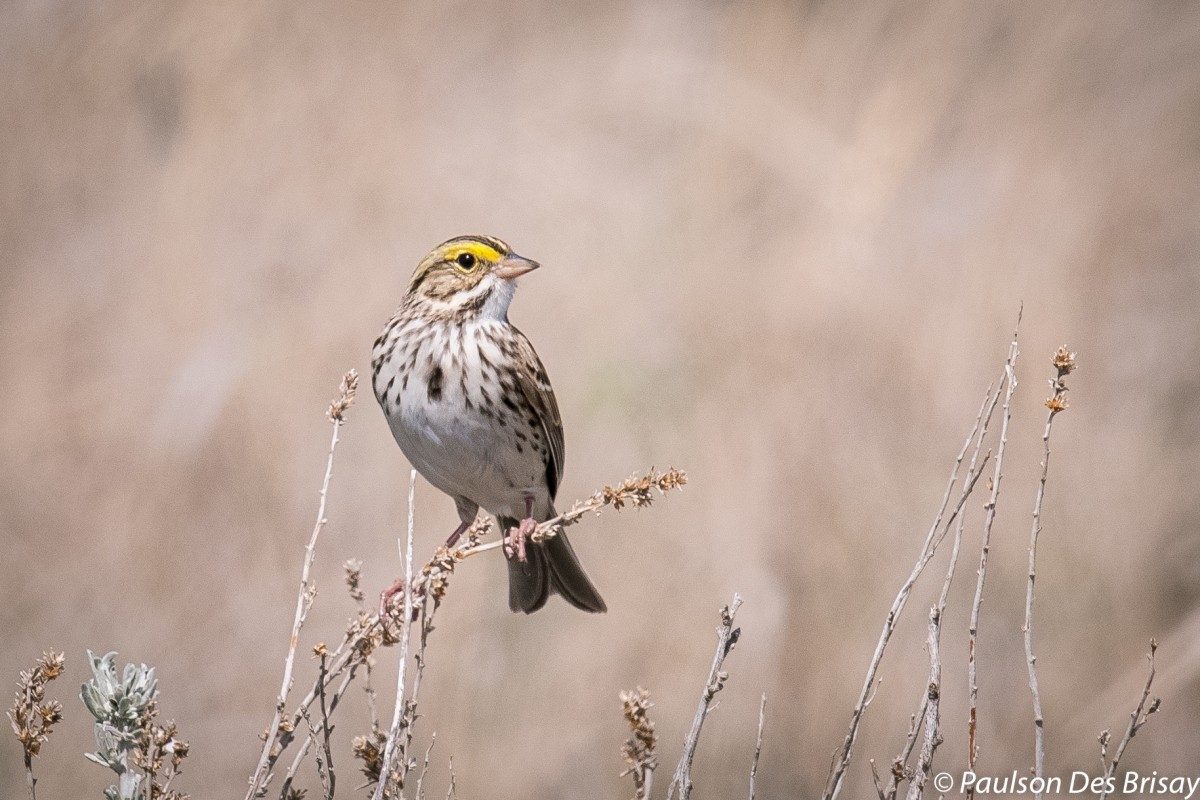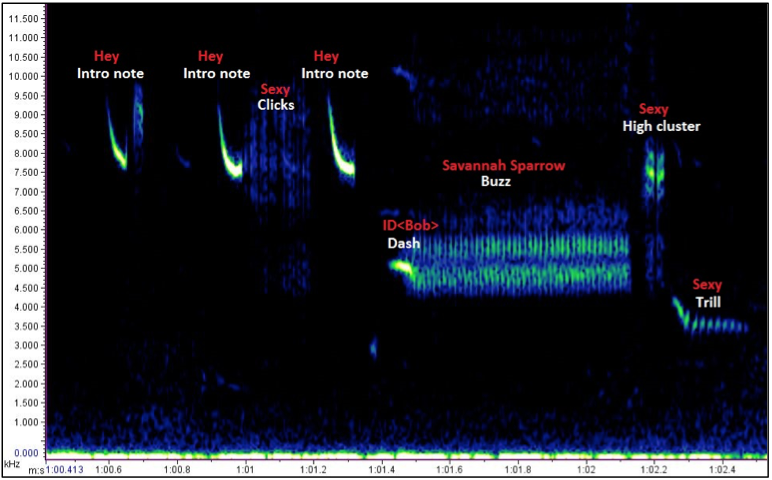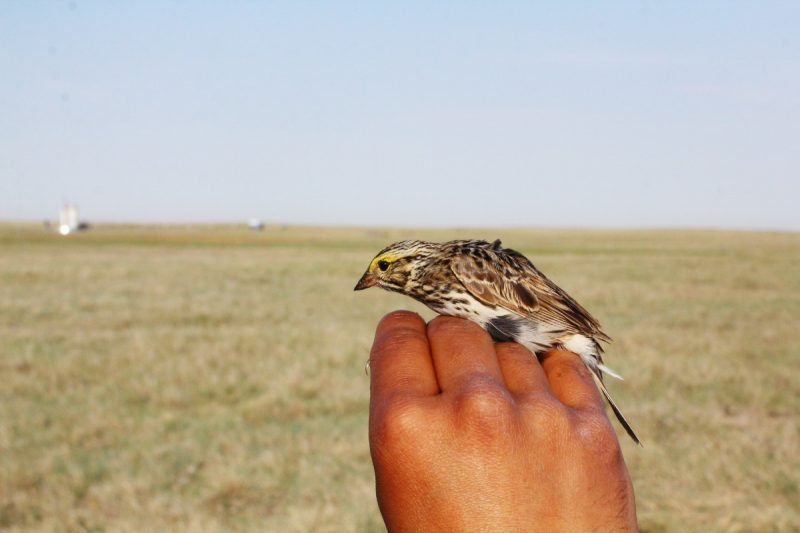
Savannah Sparrow // Photo: Paulson Des Brisay
Canadian songbirds forced to change their tunes
Some Canadian songbirds have to change their tunes because noise pollution from things like oil and gas drilling equipment otherwise drowns out important parts of their songs, University of Manitoba researchers have found.
Birdsongs carry information, like how fit or “sexy” the singer is, the species, even the individual’s “name” and motivation. Miya Warrington and Nicola Koper from the U of M’s Natural Resources Institute looked at what parts of the birdsongs were changing to learn what aspects of their song are most under threat of being drowned out by noise
“Birdsong, in a sense, may act as a ‘message in a bottle’, indicating how a bird may be struggling in terms of communicating their messages to their fellow birds,” Warrington says.
The U of M team published their findings in this month’s The Condor: Ornithological Applications. They showed that the Savannah Sparrow is able to adjust their song in subtle and precise ways to cope with noise pollution from natural gas well and oil extraction infrastructure in their grassland habitat.
The birds conduct their songs to account for what oil drilling machines roar at the time, sometimes changing its pitch, sometimes its tonality, to make sure the key nugget of information gets across. For instance, when generator-powered screwpumps scream, males use buzzier notes to say “I’m sexy,” but seemed to have little need to alter their songs when near the quieter types of oil wells, such as those without generators.
“Bird song is a complex vocalization that conveys different types of information. It isn’t really surprising then that birds may compensate for which ever important piece of information cannot be heard clearly above noise. It’s like having a conversation at a loud cocktail party; you may repeat your name several times if that is what is important to you at the time,” Warrington says.
This also has important conservation implications. Grassland songbirds are declining faster than songbirds in any other ecosystem in North America, and activities from energy extraction may be further threatening vulnerable species.
“Our soundscapes are changing, just as our landscapes are changing,” says professor Nicola Koper, who supervised the research. “Different species have all sorts of ways of compensating for this. It’s fascinating to me that Savannah sparrow’s response to noise is so subtle and precise. I just hope their techniques are effective – that’s what we are looking at next.”
How do we measure birdsong?
Warrington explains:
Birdsongs are made up of many components or syllables. Each syllable type contains different information. In Savannah Sparrow Song, the ‘introductory note’ syllables alerts the audience that a performance is about to start. Some syllables, like the ‘clicks’, ‘high cluster’ and ‘trill’, indicate how sexy the males are. The ‘dash’ syllable appears to serve as a name or individual identifier, while the ‘buzz’ syllable identifies the Savannah Sparrow to species. As such, a song contains multiple types of information, like song lyrics, such that a bird may be singing “Hey, hey, sexy, hey, Bob, Savannah Sparrow, sexy, sexy.”
We can visualize bird song by creating a sonogram (spectrogram), which, in brief, is a digital representation of sound waves, where the horizontal x-axis represents time, the vertical y-axis represents pitch (frequency), and the intensity of the colour represents intensity (sound energy/volume).

Sonagram of a Savannah Sparrow song at control sites in Brooks, Alberta. Image was created in Raven Pro 1.4 (Cornell Lab of Ornithology).
There are many features of bird song that can be measured. Song pitch is often measured when looking at the effects of noise pollution. Sounds that have higher values of frequency, such as the introductory notes of the Savannah Sparrow song, sound high <high pitch clip> , while sounds with lower values of frequency, such as the terminal trill of the Savannah Sparrow song, sound low <low pitch clip>. When it comes to dealing with noise pollution, birds may alter song pitch in order to move their song features out of the noise frequency range in order to avoid overlap, or they may lower pitch in order to increase the distance at which their song features could be heard.
Bird vocalisations are often also described by measuring tonality. Tonality describes the frequency range (bandwidth) and disorder (entropy) of the sound, such that more tonal sounds have narrow band widths or low values of entropy and sound more like-whistles, like the introductory notes <high pitch clip> and dash syllables <high tonality clip>; while less tonal sounds have high bandwidth and high values of entropy and sound ‘buzzier’, like the buzz syllable found in the middle section of Savannah Sparrow songs <buzz clip>. When faced with noise, birds may alter the tonality of their song. Less tonal sounds (‘buzzier’) renders the singer easier to find, while more tonal sounds travel farther distances.
Research at the University of Manitoba is partially supported by funding from the Government of Canada Research Support Fund.







